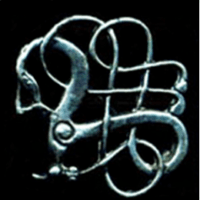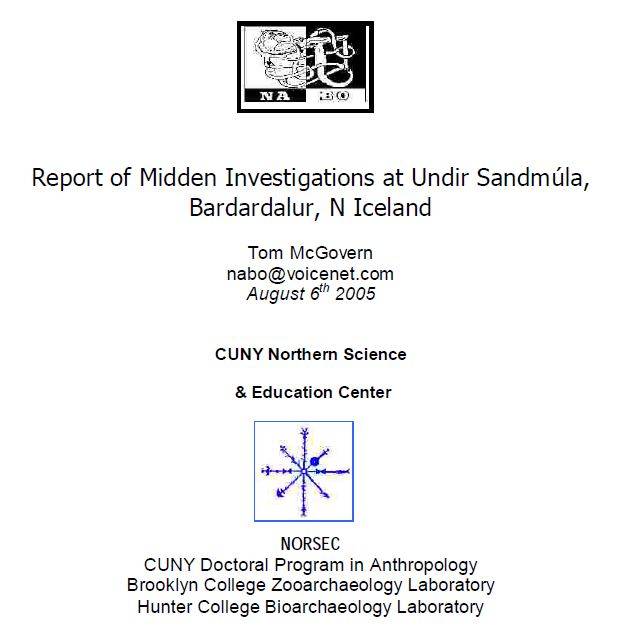- Version
- Download 437
- File Size 0.00 KB
- File Count 1
- Create Date 6 August 2005
- Last Updated 27 September 2023
Report of Midden Investigations at Undir Sandmúla, Bardardalur, N Iceland
On August 3-4 2005 a midden team (Tom McGovern, Seth Brewington, Konrad Smiarowski, Raymond Petit) collaborated with in the investigation of an abandoned farm site at Undir Sandmúla (SDM). The site had produced prior surface collections of Viking age artifacts, and has been visited by several scholars over the past century. The site was very heavily eroded, with most of the surface reduced to prehistoric till and boulder surface. Scatters of bone in several areas resting directly upon this terminal erosion surface indicated the presence of very extensive (and probably very rich) midden deposits once existing around the surviving structures (1, 2, 3, see plan 1). Partially turf covered mounds to the NW (4) and NE (5) of the main hall structure (1) also showed associated bone scatters. It was hoped that these stab s might cover midden deposits as at Hrísheimar and Sveigakot in Mývatnssveit. A systematic coring transect (16 cores all carried to H3 prehistoric tephra) of the larger area 5 unfortunately revealed only sterile, wind deposited banded natural deposits 50-90 cm thick which extended down to either the LNS or the H3 tephra without showing any signs of either cultural deposit or the many tephra post dating the LNS. Similar results were provided by straightening of a 18 m long natural erosion face that runs diagonally across the surface of area 5 (trench 1). The LNS could be followed fairly continuously acro the trench 1 profile, though in places even this tephra was breached by erosion down to the H3 level. Wind transported deposits visible in the trench 1 profile ranged in size from silt up to 2 -3 mm diameter pebbles, suggesting the velocity and intensity of the erosion events that have flayed the site surface down to prehistoric levels over most of its surface. . One of the cores near the S end of area 5 showed ca 5 cm of cultural material, and a second test trench (4 x 4 m, trench 2) was opened around this core. A small deposit of mottled grey ash with a heavy concentration of calcined bone was found in an area extending ca 2 m x 0.75 m, with a depth of deposit ranging from 2-5 cm. This midden material rested directly upon the upper surface of the Landnám Tephra Sequence with no more than a few millimeters separating the two layers. This small ving deposit was collected as a total bulk sample for flotation. While the middens once surrounding this highland site seem to have been almost completely destroyed by erosion, the small remaining deposit does serve to suggest some very early occupation of this site.






Share this: